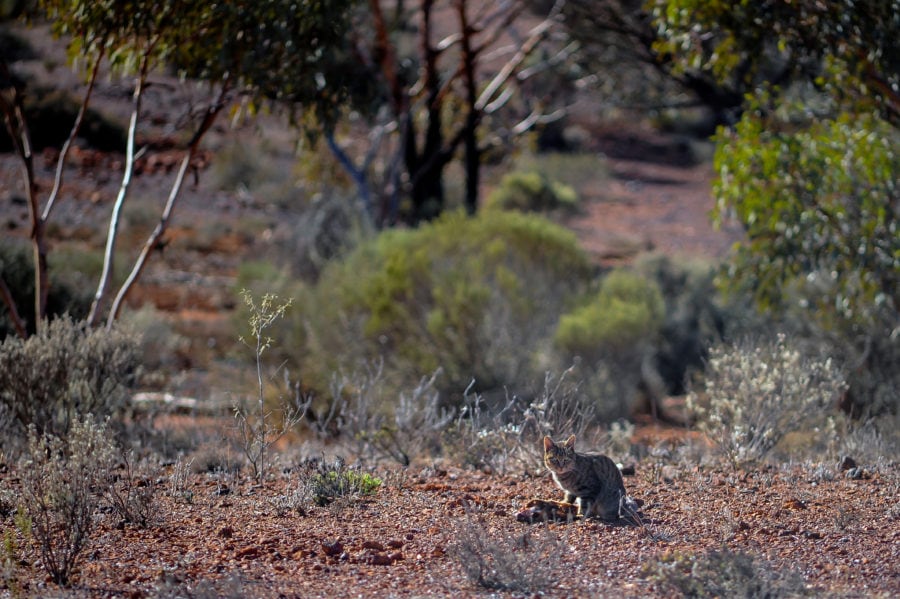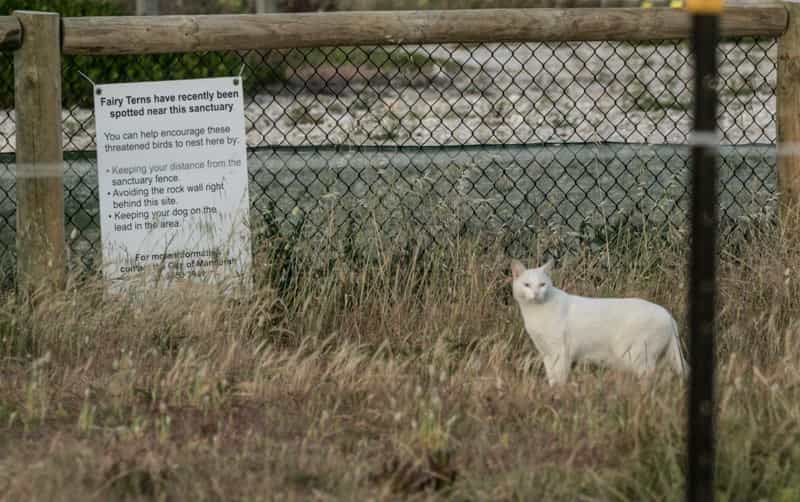Feral cats are taking advantage of the ecological crisis caused by the bushfires

PLENTY OF AUSTRALIAN animals take advantage of bushfires. Take for example, Australia’s remarkable ‘firehawks’, which include blake kites, whistling kites and brown falcons. These birds will pick up smouldering sticks, drop them in unburnt areas, spreading the fire further and flushing out potential prey.
But when non-native animals, particularly feral cats and foxes, begin feasting on what’s left after a bushfire, especially those as ecologically devastating as those Australia is currently experiencing, there’s potential for some of our unique mammal species to be pushed further towards the brink.
Wildlife ecologist Sarah Legge, who co-authored Cats in Australia: Companion and Killer in 2019, says that there are three stages to the impacts feral cats have on native animals affected by the bushfires.
The first is the pressure they’ve put on native animals before the bushfires. Recent analysis shows that pet and feral cats together kill more than two billion mostly native reptiles, birds and mammals a year in Australia, and have contributed to the extinction of more than 20 native mammal species.
Native animals did not co-evolve with such effective predators as cats, which were introduced to Australia following colonisation, making them easy prey. On top of this, Australian mammals have lower reproductive rates than invasive mammalian predators such as cats and foxes, meaning they quickly outnumber native animals.
The second stage, which occurs soon after a bushfire, is when cats take advantage of exposed animals that haven’t been directly killed in the fire. “They’re attracted to hunt in areas that have been severely burnt,” says Sarah. “In these areas, their hunting efficiency increases substantially.”
In 2015, ecologist Hugh McGregor and Sarah attached collar cameras on 23 occasions to 13 feral cats. They recorded 101 hunting events, of which 32 were successful, and over a quarter of these kills weren’t eaten – cats are ‘surplus killers’. According to Sarah, the mortality risk for small mammals in fire-affected areas rose significantly.
The work also revealed that remnant vegetation left within the firescar footprint was critical to the survival of small mammals, but in the most recent bushfires, the fire intensity has been extreme in much of the 10 million hectares of land that has been burnt, meaning even small areas of vegetation are few and far between.
In 2016, Hugh and Sarah detailed their discovery that, not only do cats thrive after fires in their own territory, but they will also travel many kilometres outside their home ranges to burnt areas.
Given the large number of feral cats in Australia and the predicted increase in bushfires due to global heating, conservation issues are mounting.
As for the current bushfires, Sarah says it isn’t yet safe enough in many areas for ecologists to go in and fully assess the damage, but she would expect that any cats that have survived will be doing “very well,” which brings us to the third stage.
“After they’ve mopped up any prey-sized animals in the burnt areas, they’ll probably move into remnant unburnt areas that native survivors are using as refuge, putting further pressure on those animals. This will further constrain the ability of populations of native species to recover after the fire.”
The question for ecologists is, how can we protect native animals from predation by cats and foxes in the event of bushfires as they become more extreme?
Deakin University PhD student Darcy Watchorn is the first person to test out supplementary refuges made from chicken wire and shadecloth for native animals in a bushfire-ravaged area.
The design of the above-ground tunnels was first created by ecologist Chris Dickman to protect small mammals from feral animal predation in open desert environments.
Darcy tested the shelters in recently burnt areas of Victoria’s Otway Ranges to some success, but it’s too early to draw reliable conclusions from this.
Ecologists warn that the bushfires have pushed at least 20 threatened species closer to extinction, calling it a ‘season in hell’ and predation by cats is just one issue Australia’s wildlife face in the aftermath of the unprecedented fires.



